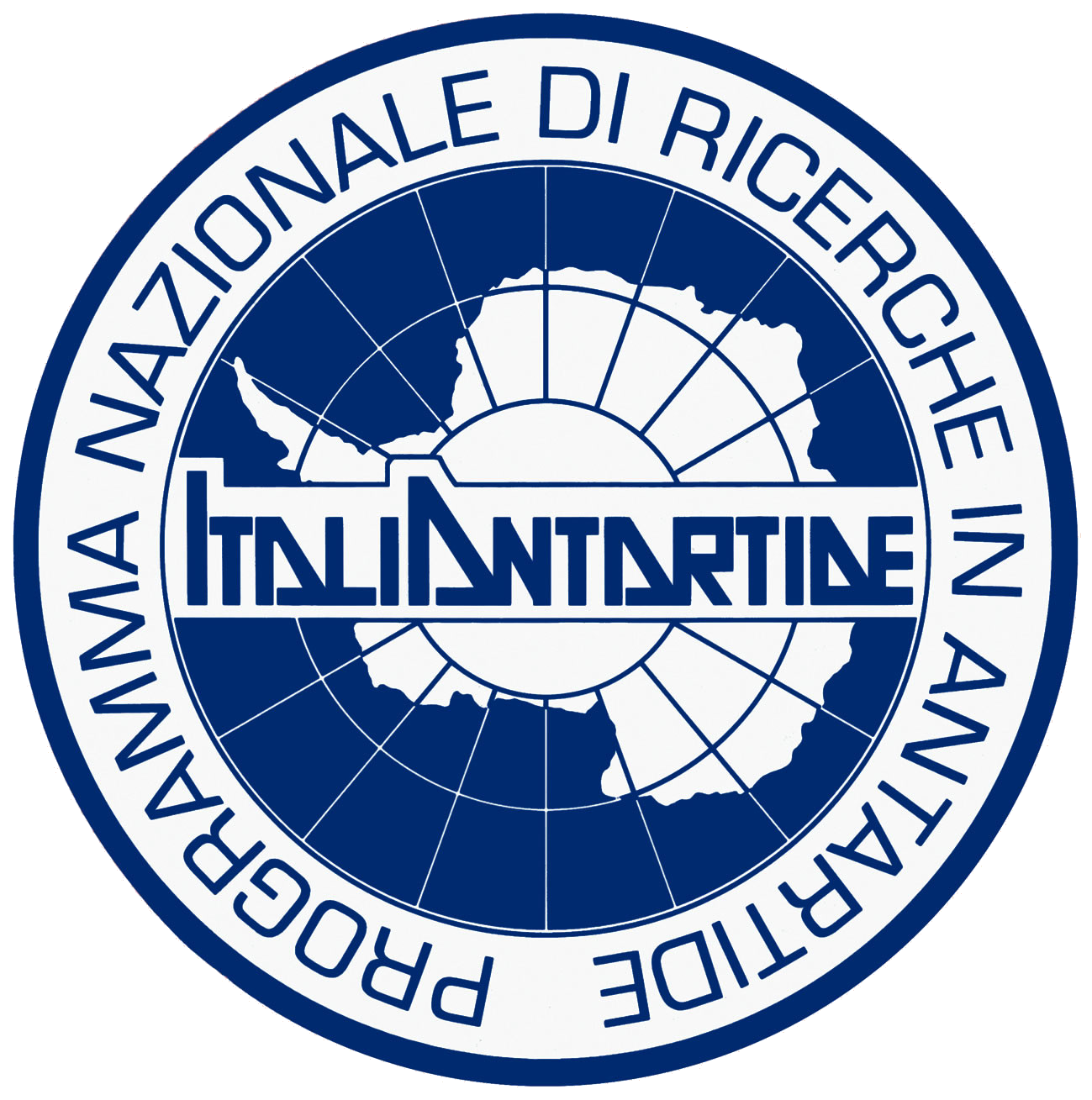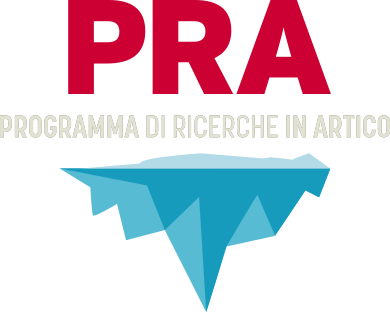English_content
Dirigibile Italia is one of the multidisciplinary research stations managed by the CNR, providing support to numerous national and international research projects. The station, inaugurated in 1997, is located in the village of Ny-Ålesund (78°55' N, 11°56' E), on Spitsbergen Island, in the Svalbard archipelago. It is from there that the polar expedition of the General Umberto Nobile set off in 1928, and the station is named in its honour. The Department of Earth System Sciences and Technologies for the Environment (DSSTTA) of the CNR managed the station in the past, but is has now been assigned to the Institute of Polar Sciences (July 2020).
The station participates in the INTERACT and SIOS access programs, making its spaces and means available to countries that do not have access to the Arctic so they can carry out research projects.
It is also included in the Forum of Arctic Operators FARO, a country membership organization that promotes dialogue on logistics and operational support for scientific research in the Arctic.
Dirigibile Italia is a 323 m2 structure, 170 of which are used as laboratories and offices; it can accommodate up to 7 people.
The base is open throughout the year to provide support to research activities.
Among the services that the base provides are:
• 6 beds for staff;
• a chemistry laboratory equipped with a laminar flow hood and an extraction hood, a precision balance, ultrapure water dispenser, freezer and more;
• other workspaces;
• an equipped electronics and mechanics laboratory;
• an internal warehouse space for storing material;
• 3 snowmobiles for winter and spring shifts, equipped with trolleys for transporting material, as well as the necessary suits, boots and helmets;
• 3 fat-bikes with trolley for summer shifts;
• 5 VHF radios for communication between people in the field and for their safety.
- Contact: stationleader.arctic AT cnr.it
- Station Welcome page
- Facebook page of the Research Station
The CNR is present in various international coordination and scientific planning organizations in the Arctic and Antarctica. These include the International Arctic Science Committee (IASC), the European Polar Board (EPB), the Forum of Arctic Research Operators (FARO), the Ny-Ålesund Scientific Managers Committee (NySMAC) and the Sustaining Arctic Observing Networks (SAON).
Furthermore, thanks to signed treaties or political agreements, the CNR actively supports the presence of our country, with its experts, in scientific organizations, committees and working groups. CNR researchers participate to the Working and Expert Groups of the Arctic Council (AC). With regards to Antarctica, the CNR takes an active part in the various permanent committees of the Scientific Committee on Antarctic Research (SCAR).
ISP is strongly committed to guaranteeing the participation of the CNR in the SIOS (Svalbard Integrated Arctic Earth Observing System) initiative whose purpose is to integrate, optimize and coordinate resources and research in the Svalbard archipelago at an international level.
In this context, the Institute of Polar Sciences (ISP) supports the CNR’s representation on international bodies with the presence of:
| Acronym | Organisation | Name | Role |
|---|---|---|---|
| Arctic Council - Arctic Contaminants Action Programme
POPs and Mercury Working group |
Warren Cairns | Component | |
| Arctic Council - Expert Group on Black Carbon and Methane | Stefania Gilardoni | Component | |
| Arctic Council - Arctic Monitoring & Assessment Programme | Nicoletta Ademollo, Vito Vitale | Components | |
| Arctic Council - Arctic Monitoring & Assessment Programme
Mercury Working group and POPs Working group |
Warren Cairns | Component | |
| Association of Polar Early Career Scientists National Committees |
Andrea Spolaor | Component | |
| Arctic Research Icebreaker Consortium | Leonardo Langone | CNR reprensentative | |
| Marine Invasive Alien Species in Arctic Waters | Maurizio Azzaro | National Delegate | |
| European Polar Board | Vito Vitale | CNR reprensentative | |
| Forum of Arctic Research Operators | Mauro Mazzola | National reprensentative | |
| An International Study of the Marine Biogeochemical Cycles of Trace Elements and Isotopes | Paolo Montagna | National Delegate | |
| International Arctic Science Committee | Carlo Barbante | National Delegate | |
| International Arctic Science Committee
Cryosphere Working Group |
Andrea Spolaor | Component | |
| International Arctic Science Committee
Marine Working Group |
Tommaso Tesi | Component | |
| International Permafrost Association | Renato R. Colucci | National Delegate | |
| Ny-Ålesund Science Managers Committee | Mauro Mazzola, Andrea Spolaor, ad interim | National representatives | |
| Sustaining Arctic Observing Networks | Vito Vitale | Component | |
| Synoptic Arctic Survey Scientific Steering Committee | Maurizio Azzaro | Component | |
| Scientific Committee on Antarctic Research
Input Pathways of Persistent Organic Pollutants to Antarctica |
Nicoletta Ademollo | Component | |
| Svalbard Integrated Arctic Earth Observing System
Board of Director |
Vito Vitale | Component | |
| Svalbard Integrated Arctic Earth Observing System
Research Infrastructure Coordination Committee |
Mauro Mazzola, Stefania Gilardoni | Components | |
| Svalbard Integrated Arctic Earth Observing System
SIOS Data Management System Working Group |
Giulio Verazzo | Component | |
| United Nations, Division for Ocean Affairs and the Law of the Sea,
World Ocean Assessment III |
Maurizio Azzaro | Expert |
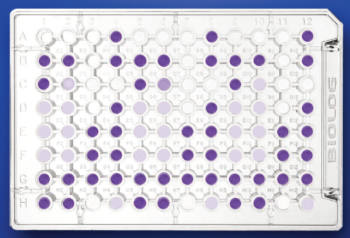
Brief description
The experimental activities carried out at the BioChem Lab in Rome are focused on the study of the effects of legacy and emerging organic micropollutants on organisms belonging to different levels of the trophic web (from microbial communities to higher organisms) in the context of ongoing climate change. The analytical determinations on the biota are aimed at evaluating bioaccumulation and biomagnification processes of target pollutants. Other studies performed at the BioChem Lab focus on:
- The degradation rates (evaluation of the half-life time - DT50 - and determination of metabolites or transformation products of target compounds) of the organic contaminants by setting up laboratory-scale experiments.
- Evaluate the effects of organic micropollutants on specific target organisms (e.g. avoidance behaviour test in Eisenia foetida) and on the structure (PhosphoLipid Fatty Acid analysis-PLFA) and function (Community Level Physiological Profile - CLPP) of autochthonous microbial communities, through the preparation of laboratory-scale experiments and environmental monitoring.
- Investigate the occurrence and diffusion of antibiotic resistance genes (ARGs) and the intI1 gene which is an anthropogenic impact proxy, among natural microbial communities related to the presence of antibiotics in environmental matrices.
Environmental compartments
The bioaccumulation/biomagnification studies of organic micropollutants involve biota such as fish, molluscs, terrestrial and aquatic earthworms and terrestrial and aquatic plant species. The studies on persistence and effects of pollutants on natural microbial communities are related to different environmental compartments such as surface waters and sediments (seas, rivers, lakes), snow/ice and soils.
Analytical techniques
Studies on bioaccumulation/biomagnification/persistence of organic contaminants are performed by a combination of:
- Pre-treatment methods (e.g. freeze-drying, filtration, etc.).
- Extraction/Clean-up methods (solid-phase extraction-SPE, pressurized liquid extraction-PLE, liquid-liquid extraction-LL).
- Sensitive and selective analytical methods based on the coupling of chromatographic techniques (HPLC or GC) and fluorescence, FID-ECD, and mass spectrometric (MS) detection.
- The avoidance behaviour test is based on the exposure of organisms, specifically earthworms belonging to the Eisenia foetida species, to different sub-lethal concentrations of organic contaminants, to evaluate their escape/avoidance behaviour in the contaminated area.
- The evaluation of the composition of natural microbial communities is carried out by PLFA (PhosphoLipid Fatty Acid) profiling. This biochemical technique includes the extraction of fatty acids from microbial membrane phospholipids in the environmental matrix and a methylation reaction followed by separation and analysis with gas chromatography.
- The analysis of microbial diversity at a functional level is performed by the determination of the metabolic/physiological profile (CLPP). This physiological assay involves the incubation of the environmental sample in specific plates and spectrophotometric measurements at fixed times.
- The analysis of ARGs and intI1 gene is performed by DNA extraction from the environmental samples by using specific kits and subsequent analysis by qPCR.
Equipment
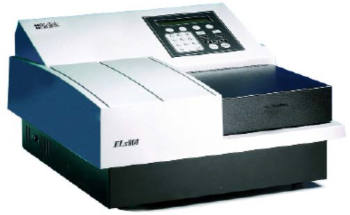 The BioChem Lab is equipped with the following analytical tools:
The BioChem Lab is equipped with the following analytical tools:
Benchtop lyophilizer (freeze-dryer LABCONCO) 2.5 L capacity, equipped with a touchscreen display, for the pre-treatment of solid matrices subsequently extracted with PLE.
Solid Phase Extraction (SPE):12 inlets of the solid phase extractor are connected to cartridges packed with specific adsorbents for the extraction of target compounds from liquid matrices through a vacuum system.
Syncore® Analyst (Buchi) for the simultaneous pre-concentration of liquid phase samples.
Rotavapor R 100 (Buchi), equipped with an electronic interface to control the vacuum system and the recirculating chiller.
Gas Chromatograph (Perkin Elmer, Clarus 480) coupled to a FID-ECD detector (Flame Ionization Detector- Electron Capture Detector). The instrument is connected to an autosampler (Autosystem, Perkin Elmer) and is controlled by TotalChrom Software.
Gas chromatograph (Thermo Fisher, Trace 3000) coupled to a mass spectrometry (MS) detector (Thermo Fisher, ISQ7000). The device is connected to an autosampler (Thermo Fisher. AI 1310) and is controlled by a Chromeleon software.
HPLC (quaternary pump, column Oven mod. LC-100 and Micro Pump Series 200, Perkin Elmer, USA) coupled to a fluorescence detector (Perkin Elmer Series 200a). The device is controlled by Chromeleon Software.
HPLC (binary pump, Vanquish TM Core HPLC system, Thermo Scientific TM, Italy) coupled to a high-resolution mass spectrometer (Orbitrap Exploris 120, Thermo Scientific TM, Italy). The device is controlled by XcaliburSoftware (version 5.1).
Spectrophotometer (Biolog Microstation System, Biolog Inc.) for the reading of microplates (96 positions). This instrument is controlled by specific software.
Contact person: Dr. Luisa Patrolecco – luisa.patrolecco AT cnr.it
Brief description
The experimental activities carried out at the MicroChem Lab in Rome focus on the analytical determination of legacy and emerging organic micropollutants and their metabolites, in order to understand their diffusion, distribution, persistence dynamics and fate in the environment. The studies performed at the MicroChem Lab aim also to study the relationships between the climate change and the spread of contaminants at global and local scale. For these purposes, the development and optimization of highly specific and sensitive analytical methodologies for the detection of chemicals at trace and sub-trace concentration levels in the environmental matrices, is required.
Environmental compartments
The experimental activities focus on aquatic and terrestrial ecosystems, therefore the environmental matrices of interest are: Surface waters and sediments (seas, rivers, lakes), snow/ice, soils, aquatic and terrestrial vegetation, biota.
Analytical techniques
The analytical determination of the organic micropollutants is performed by the combination of:
- Pre-treatment methods (e.g. freeze-drying, filtration, etc.);
- Extraction/Clean up methods (solid-phase extraction-SPE, pressurized liquid extraction-PLE, liquid-liquid extraction-LL);
- Sensitive and selective analytical methods based on the coupling of chromatographic techniques (HPLC or GC) with fluorescence, FID-ECD and mass spectrometry detection.
Equipment
The MicroChem Lab is equipped with the following analytical tools:
Benchtop lyophilizer (freeze-dryer LABCONCO) 2.5 L capacity, equipped with a touchscreen display, for the pre-treatment of solid matrices subsequently extracted with PLE.
Solid Phase Extraction (SPE): 12 inlets solid phase extractor connected to cartridges packed with specific adsorbents for the extraction of target compounds from liquid matrices through a vacuum system.
Sonicator (Branson, mod. 2510) for the extraction of chemical compounds from solid matrices by using suitable solvents.
ASE 150 (Dionex, Thermo Scientific) to perform pressurized liquid extraction (PLE) of organic pollutants from solid matrices.
Speed Extractor E-916 (Buchi) to perform simultaneous pressurized liquid extraction (PLE) of 6 samples, operating in different modes.
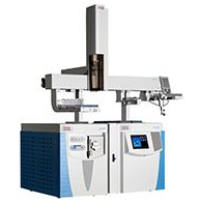 Rotavapor R 100 (Buchi), equipped with an electronic interface to control the vacuum system and the recirculating chiller.
Rotavapor R 100 (Buchi), equipped with an electronic interface to control the vacuum system and the recirculating chiller.
Gas chromatograph (Thermo Fisher, Trace 3000) coupled to mass spectrometry (MS) detector (Thermo Fisher, ISQ7000). The device is connected to an autosampler (Thermo Fisher. AI 1310) and is controlled by a Chromeleon software.
HPLC (quaternary pump, column Oven mod. LC-100 and Micro Pump Series 200, Perkin Elmer, USA) coupled to a fluorescence detector (Perkin Elmer Series 200a). The device is controlled by a Chromeleon Software.
HPLC (binary pump, Vanquish TM Core HPLC system, Thermo Scientific TM, Italy) coupled to a high-resolution mass spectrometer (Orbitrap Exploris 120, Thermo Scientific TM, Italy). The device is controlled by XcaliburSoftware (version 5.1).
Contact person: Dr.Luisa Patrolecco – luisa.patrolecco AT cnr.it
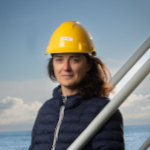 Institute of Polar Science (CNR-ISP)
Institute of Polar Science (CNR-ISP)
GIULIANA PANIERI Director
Giuliana Panieri is the new Director of the Institute of Polar Sciences, and her main interests are the study of extreme marine environments and their connections with climate change in the Arctic and elsewhere. For the last 12 years, she has been a full professor of Geology at the Department of Geosciences of the Arctic University of Norway. She has worked at ISMAR CNR (Italy) and at international universities in the USA, Spain, Germany and France. She has served as President of the Biogeosciences Division and Secretary General of the European Geosciences Union (EGU), managing and coordinating numerous national and international projects. Giuliana has published numerous scientific works, has been a book editor, and has been invited several times as a keynote speaker at international conferences. She has led numerous expeditions in the Arctic Oceans. Lately, she has been keen on developing tools for Ocean Literacy and supporting the UN Sustainable Development Goals, implementing specific tasks and deliverables within the framework of numerous national and international projects.
![]() https://orcid.org/0000-0001-9411-1729 Scopus - Author ID: 56135838100 Loop profile: 835890
https://orcid.org/0000-0001-9411-1729 Scopus - Author ID: 56135838100 Loop profile: 835890
E-mail: direttore.isp AT cnr.it
c/o Campus Scientifico - Università Ca' Foscari Venezia
Via Torino, 155
30172 VENEZIA MESTRE (VE)
Previous directors:
• Mauro Sclavo - Interim Director (From 1st May 2024 until 31st January 2025)
• Carlo Barbante (From 1st May 2020 until 30th April 2024)
• Leonardo Langone - Interim Director (From 1st June 2019 until 30th April 2020)
The Institute Advisory Board (Art. 13, Regolamento Organizzazione e Funzionamento CNR del 2019) consists of the Director, who presides over it, six elected representatives of the researchers and technologists of the Institute and one technical-administrative staff representative.
Previous Advisory Board
The ISP Advisory Board members are:
.
.
.
.
.
.
.
.

Giuliana Panieri
M.Sclavo (until 2024/31/01)
C.Barbante (until 2024/30/04)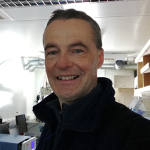
Warren Raymond Lee Cairns
(Representative of the
Researchers and Technologists)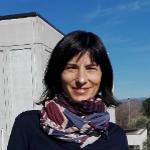
Pamela Cialli
(Representative of the
Technical-Administrative staff) 
Fabiana Corami
(Representative of the
Researchers and Technologists)
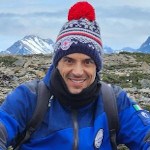
Francesco Filiciotto
(Representative of the
Researchers and Technologists) 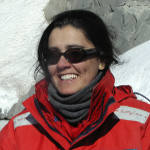
Angelina Lo Giudice
(Representative of the
Researchers and Technologists)
Angelo Lupi
(Representative of the
Researchers and Technologists)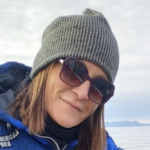
Francesca Spataro
(Representative of the
Researchers and Technologists)
December 21, 2019 - December 19, 2023
Director: Carlo Barbante
Representatives of the researchers and technologists: Maurizio Azzaro, Fabiana Corami, Federico Giglio, Elena Gregoris, Mauro Mazzola, Rosamaria Salvatori
Representative technical-administrative staff: Alessandro Cosenza
The Amundsen-Nobile Climate Change Tower (CCT) is a scientific platform dedicated to studying the thermodynamic characteristics of the atmospheric boundary layer and the exchange processes between the surface and the lower layers of the atmosphere. The structure is composed of 17 modules equipped with patch boxes to provide a power supply and data connection that ends in a dedicated hut at 40 m from the tower, where the acquisition systems are located. The CCT provides continuous profiles of meteorological parameters at four levels up to 34 m, measurements of turbulent fluxes of momentum heat and moisture at two levels as well as of radiation balance components (visible and infrared). Measurement of the characteristics of the snow layer (depth and temperature) are also provided in conjunction with the atmospheric parameters.
Due to the uniqueness of such an infrastructure in Ny-Ålesund, since 2012, the CCT and the surrounding area have become a point of reference for the integrated observation of the components of the climate system. Offering access to national and international research groups, new scientific installations have been set up. In particular for the measurement of greenhouse gases (in collaboration with KOPRI); for the measurement of the snow cover index and spectral reflectivity of the snow; for remote sensing of wind profiles with SODAR and WindLIDAR (in collaboration with KOPRI); to study processes in the active layer, the vegetation, the snow cover and the permafrost temperature profiles.
The Institute of Polar Sciences (ISP) of the National Research Council was born on June 1st, 2019 with act n.81 on 31/05/2019 of President Inguscio. The idea of a Polar Institute has its roots in research activities, which have expanded over time, starting from the first years of Antarctic research in 1985. The construction of the Italian base in Antarctica (MZS station) before and the base in the Arctic (DI station) afterwards, has allowed the development of two generations of polar researchers who have made these remote environments their natural laboratory and their home away from home.
The National Research Program in Antarctica (PNRA)
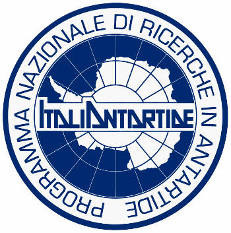 Since its first expeditions in 1968, 1973 and 1978, the CNR has strongly supported the diplomatic action of the MAECI (Ministry of Foreign Affairs and International Cooperation) which led to the accession of Italy to the Antarctic Treaty. The CNR initially contributed to identifying the construction site of the Italian station Mario Zucchelli and is currently coordinating the different lines of scientific activity of the National Research Program in Antarctica (PNRA). The implementation of research in Antarctica is carried out by the national scientific community, of which 51% are university research groups, 23% CNR research groups, 9% from INGV, 5% from ENEA, 4 % from OGS and INAF and the remaining 4 % is carried out by other institutions. The scientific priorities identified within the framework of the National Research Program in Antarctica, are mostly multidisciplinary, and can be traced around the following topics: dynamics of the atmosphere and climate processes, dynamics of the polar ice cap, solid earth dynamics, polar ocean dynamics, Sun-Earth relationships and space-weather, the universe above Antarctica, evolution, adaptation and biodiversity, humankind in extreme environments, environmental contamination, paleoclimate, environmental issues and risks, as well as technology: innovation and experimentation. In many of these research areas, the CNR’s activity, thanks to its research network, is at an excellent level, although it is still fragmented into numerous institutes belonging to various departments.
Since its first expeditions in 1968, 1973 and 1978, the CNR has strongly supported the diplomatic action of the MAECI (Ministry of Foreign Affairs and International Cooperation) which led to the accession of Italy to the Antarctic Treaty. The CNR initially contributed to identifying the construction site of the Italian station Mario Zucchelli and is currently coordinating the different lines of scientific activity of the National Research Program in Antarctica (PNRA). The implementation of research in Antarctica is carried out by the national scientific community, of which 51% are university research groups, 23% CNR research groups, 9% from INGV, 5% from ENEA, 4 % from OGS and INAF and the remaining 4 % is carried out by other institutions. The scientific priorities identified within the framework of the National Research Program in Antarctica, are mostly multidisciplinary, and can be traced around the following topics: dynamics of the atmosphere and climate processes, dynamics of the polar ice cap, solid earth dynamics, polar ocean dynamics, Sun-Earth relationships and space-weather, the universe above Antarctica, evolution, adaptation and biodiversity, humankind in extreme environments, environmental contamination, paleoclimate, environmental issues and risks, as well as technology: innovation and experimentation. In many of these research areas, the CNR’s activity, thanks to its research network, is at an excellent level, although it is still fragmented into numerous institutes belonging to various departments.
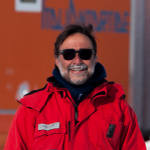 Full Professor within the Class 08/A4 - Geomatics at the University of Bologna Department DICAM. Coordinator of the PhD@DICAM Doctoral course, composed by four curricula (PhD in Civil, Chemical, Environmental and Materials Engineering) of DICAM. Scientific Responsible of the Land Surveying and Geomatics Laboratory (LARIG). Part of the International GNSS Service and member of the University Consortium: UNAVCO.
Full Professor within the Class 08/A4 - Geomatics at the University of Bologna Department DICAM. Coordinator of the PhD@DICAM Doctoral course, composed by four curricula (PhD in Civil, Chemical, Environmental and Materials Engineering) of DICAM. Scientific Responsible of the Land Surveying and Geomatics Laboratory (LARIG). Part of the International GNSS Service and member of the University Consortium: UNAVCO.
Main scientific and research activities in the polar regions:
- Researches in Antarctica for the study of geodynamics and for the study of glaciers movements, within the National Program of Research in Antarctica (PNRA) since 1990.
- To date he attended 10 scientific expeditions in Antarctica and one in Arctic (Svalbard Islands) in 2002.
- Responsible of the GPS geodetic network for the study of the ice surface velocity field around the site of the deep ice coring at Dome Concordia (European Project for Ice Core in Antarctica, EPICA).
- Member of the European Project H2020 Beyond EPICA – Oldest Ice, with the aim to retrieve a continuous ice core to bedrock in Antarctica, covering the climate history of the Mid Pleistocene Transition and beyond.
- Responsible of the GNSS permanent station installed at Station Concordia.
- Contribution for the installation and data analysis of a tide gauge station at Italian Mario Zucchelli Station (Antarctica).
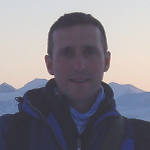 He received his bachelor's degree in Chemistry at the University of Florence in 2000. From 2001 to 2004, in the framework of his PhD at the Department of Chemistry, University of Florence, he worked on the development of semi-continuous ion chromatography coupled to Flow Analysis systems within the European project EPICA (European project for Ice Coring in Antarctica). On 20 April 2004 he got his PhD in Chemical Sciences. He took part in the national research campaigns in Antarctica 2001-2002 and 2003-2004 in the bases of Dome Concordia and Baia Terra Nova running chromatographic analyses in situ on a deep ice core perforated at Dome C as part of the EPICA project.
He received his bachelor's degree in Chemistry at the University of Florence in 2000. From 2001 to 2004, in the framework of his PhD at the Department of Chemistry, University of Florence, he worked on the development of semi-continuous ion chromatography coupled to Flow Analysis systems within the European project EPICA (European project for Ice Coring in Antarctica). On 20 April 2004 he got his PhD in Chemical Sciences. He took part in the national research campaigns in Antarctica 2001-2002 and 2003-2004 in the bases of Dome Concordia and Baia Terra Nova running chromatographic analyses in situ on a deep ice core perforated at Dome C as part of the EPICA project.
Since June 2002, he took part to several EPICA-DML and TALDICE ice core processing campaigns at the Alfred Wegener Institute for Polar and Marine Research in Bremerhaven (D). He participated to numerous sampling campaigns in the Arctic (at the Dirigibile Italia base in Ny Alesund) for the study of climate change through the monitoring of atmospheric aerosol. From December 2004 to 31st January 2018 he was the holder of several fellowships and research grants focused on to the development and application of analytical methods on ice cores and climate archives. From 01/02/2018 to 30/11/2018 he was Fixed term Researcher (RTDa) at the "Ugo Schiff" Department of Chemistry of the University of Florence SSD CHIM / 01. Starting from 01/12/2018 he held the position of Tenure track Researcher (RTDb) at the "Ugo Schiff" Department of Chemistry of the University of Florence SSD CHIM / 01. He is associated Professor at University of Florence since 1st December 2021.
More...
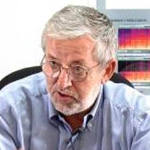 Degree in Physics from the University of Milan. Retired since 2013, he currently works as an associate researcher at CNR-ISAC where, since 2001, he has been Research Director. Recent research activity has been mainly carried out in the participation in two European projects:
Degree in Physics from the University of Milan. Retired since 2013, he currently works as an associate researcher at CNR-ISAC where, since 2001, he has been Research Director. Recent research activity has been mainly carried out in the participation in two European projects:
- ICE-ARC
- SPICES
The research topic for which the association with CNR-ISP was requested is the study of the characteristics and distribution of sea ice in polar areas with SAR images.
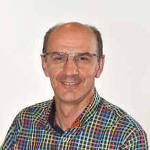 Full Professor at the Ca’ Foscari University of Venice. Since 2003 he has supervised teaching activities in the Degree Courses in Chemistry, in Chemical Sciences for Conservation and Restoration (SCCR), in Materials Science and Technologies and in Environmental Sciences. His research is focused mainly on: 1) studies on the origin, seasonal evolution and environmental fate of organic sulfur compounds of biological origin (dimethyl sulfide, carbon sulfide and dimethyl sulfonyopropionate) produced in the aquatic system; 2) development of analytical methodologies for the determination of organic micro pollutants (PCB, PAH, PCN, PBDE, PCDD, PCDF, IA) in environmental matrices (water, sediment, atmospheric aerosol) by gas chromatography coupled to both low and high resolution mass spectrometry; 3) development of analytical methodologies for the determination of natural organic compounds (amino acids, sugars, methoxyphenols, algal and fungal toxins, etc.. ) and anthropic (fragrances, aromatic pollutants) in water, biota, aerosol, snow and ice by liquid chromatography coupled with mass spectrometry for the study of local, global contamination and climate change. This activity has led to collaborations with various research groups (Griffith University, Australia; University of Charleston, U.S.A.; Boston College, U.S.A.; University of Sarajevo, Bosnia and Herzegovina; University of Belgrade, Serbia; Aristotle University of Thessaloniki, Greece; University of Rijeka, Croatia; University of Tirana, Albania, etc.. ).
Full Professor at the Ca’ Foscari University of Venice. Since 2003 he has supervised teaching activities in the Degree Courses in Chemistry, in Chemical Sciences for Conservation and Restoration (SCCR), in Materials Science and Technologies and in Environmental Sciences. His research is focused mainly on: 1) studies on the origin, seasonal evolution and environmental fate of organic sulfur compounds of biological origin (dimethyl sulfide, carbon sulfide and dimethyl sulfonyopropionate) produced in the aquatic system; 2) development of analytical methodologies for the determination of organic micro pollutants (PCB, PAH, PCN, PBDE, PCDD, PCDF, IA) in environmental matrices (water, sediment, atmospheric aerosol) by gas chromatography coupled to both low and high resolution mass spectrometry; 3) development of analytical methodologies for the determination of natural organic compounds (amino acids, sugars, methoxyphenols, algal and fungal toxins, etc.. ) and anthropic (fragrances, aromatic pollutants) in water, biota, aerosol, snow and ice by liquid chromatography coupled with mass spectrometry for the study of local, global contamination and climate change. This activity has led to collaborations with various research groups (Griffith University, Australia; University of Charleston, U.S.A.; Boston College, U.S.A.; University of Sarajevo, Bosnia and Herzegovina; University of Belgrade, Serbia; Aristotle University of Thessaloniki, Greece; University of Rijeka, Croatia; University of Tirana, Albania, etc.. ).
As part of the National Antarctic Research Programme he was responsible for Research Unit (UO) in 2004-2006; Principal Investigator in 2010-2012; responsible of UO in 2013-2014 and since 2016.
The research activity has led to the publication of over 140 publications of which 126 appear on SCOPUS, 10 chapters of books and about 200 communications at national and international conferences (h-index= 30).
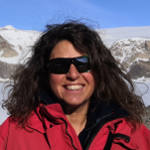 Graduate in Chemistry and Pharmaceutical Technology in 1991 at the University of Florence, in 1998 Philosophy Doctor in Environmental Science with the thesis Study of Antarctic ecosystem by ice core chemical analysis. Since 1999 she has a permanent position at the Department of Chemistry - University of Florence. In 2013 and 2017 she obtained the National Abilitation for Professor in Analytical Chemistry and in 2017 she obtained the National Abilitation for full Professor in Analytical Chemistry.
Graduate in Chemistry and Pharmaceutical Technology in 1991 at the University of Florence, in 1998 Philosophy Doctor in Environmental Science with the thesis Study of Antarctic ecosystem by ice core chemical analysis. Since 1999 she has a permanent position at the Department of Chemistry - University of Florence. In 2013 and 2017 she obtained the National Abilitation for Professor in Analytical Chemistry and in 2017 she obtained the National Abilitation for full Professor in Analytical Chemistry.
Now she works on the application of innovative highly performance analytical methods for the determination of ions and metals in environmental matrices, mainly aerosols, snow and ice. The research activity is focused on the study of the atmospheric aerosol sources and transport processes in areas with different anthropogenic impact, with particular attention to polar areas (Arctic, Antarctica) and marine areas in the central Mediterranean basin. An important part of her research activity is the study of the cycles of natural substances, the anthropogenic contributions and the aerosol-climate interaction for present time, by aerosol measurements, and for the past by chemical analysis of ice cores drilled in Antarctica. She is Editor of the following Journal/issue:
- Special issue jointly organized between Biogeosciences and Atmospheric Chemistry and Physics, Atmospheric deposition in the low-nutrient-low-chlorophyll (LNLC) ocean: effects on marine life today and in the future.
- International Journal Environmental Research and Public Health – Section “Environmental Chemistry and Technology” (IF 2018 = 2.468).
She is author/co-author of 117 and 122 publications from ISI Web of Science and Scopus respectively and she has H-index of 30.
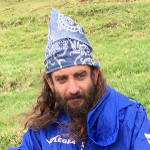 Associate professor at Ca' Foscari Unvierity of Venice (Italy) since 2019. He holds a PhD degree in Chemistry at Ca' Foscari (2011). The research interests have been focused on the development of electroanalytical methods for sensing and imaging (SECM). Since 2013, the research activity has been focused on the development of analytical methods mainly based on GC/MS and their application in environmental science and palaeoclimatology. He has been the coordinator of the project of Ateneo 2015 "The last tree standing" and of the project INSIDE in the framework of the programme SPIN 2018. Ha has been coordinator unit of the project Evasion in the framework of the PNRA 2016 programme. The research activity led to the pubblications of 39 papers with more than 400 citations (H-index 12). Since 2019 he is member of the editorial board as academic editor of the journal PlosONE and referee of a number of scientific journals.
Associate professor at Ca' Foscari Unvierity of Venice (Italy) since 2019. He holds a PhD degree in Chemistry at Ca' Foscari (2011). The research interests have been focused on the development of electroanalytical methods for sensing and imaging (SECM). Since 2013, the research activity has been focused on the development of analytical methods mainly based on GC/MS and their application in environmental science and palaeoclimatology. He has been the coordinator of the project of Ateneo 2015 "The last tree standing" and of the project INSIDE in the framework of the programme SPIN 2018. Ha has been coordinator unit of the project Evasion in the framework of the PNRA 2016 programme. The research activity led to the pubblications of 39 papers with more than 400 citations (H-index 12). Since 2019 he is member of the editorial board as academic editor of the journal PlosONE and referee of a number of scientific journals.
Since 2013 he has in charged the teaching activity in Climate of the Past (Environmental Science), Chemical Methods for Cultural Heritage Materials (Conservation Science and Technology for Cultural Heritage) and Analytical Chemistry (Chimica e Tecnologie Sostenibili).
Since 2016 he has been member of the Didactic Board and member of the Quality Assurance (AQ) Board in Conservation Science and Technology for the Cultural Heritage at University Ca’ Foscari of Venice. Member of the PhD Program in Environmental Science of University Ca’ Foscari of Venice and Member of the Joint Committee Professors – Students (Commissione Paritetica Docenti – Studenti CPDS)
 Ministero dell'Universita e Ricerca
Ministero dell'Universita e Ricerca
Programma Ricerche Artico
Programma Nazionale di Ricerca in Antartide
 Ministero degli Affari Esteri e della Cooperazione Internazionale
Ministero degli Affari Esteri e della Cooperazione Internazionale
L'Italia e l’Artico
L’Italia e l’Antartide
CNR-ISP
National Research Council
Institute of Polar Sciences
c/o Scientific Campus - Ca' Foscari University Venice - Via Torino, 155 - 30172 VENEZIA MESTRE (VE)
Phone: +39 041 2348547 - E-mail: protocollo.isp AT pec.cnr.it
Fax: +39 041 2348 549 - Codice Fiscale: 80054330586 - P.I.:02118311006
Unless otherwise indicated, the content of this site is licensed : Attribution Non Commercial Share Alike 4.0 International (CC BY-NC-SA 4.0)
Privacy policy e Cookie policy - Transparent administration (CNR)
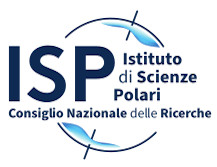






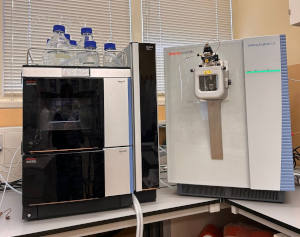
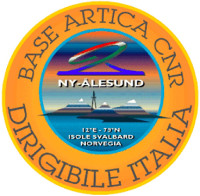 The Italian presence in the Arctic became permanent in the mid-nineties, thanks to the opening of the CNR station in the Svalbard Islands. In recent years, the interests of the Italian scientific community have been extended to other remote areas such as Greenland, areas of the Arctic Ocean, the Tibetan plateau and the Himalayas. In addition to the CNR, OGS, ENEA, INGV, INAF, ASI and some universities carry out research activities in these areas. In addition, Italy has strong economic interests in the Arctic with numerous industries that are active in this area, including ENI, Finmeccanica, Telespazio, E-geos, and Fincantieri. Since 1997 the has CNR carried out research in Ny-Ålesund in cooperation with national and international universities and other scientific institutions. The topics include climate, manmade pollution, instability of the ozone layer, the physical properties of aerosols and clouds in their role in radiation balances, ecology, genetics, physiology, biochemistry and the molecular and cellular biology of polar organisms, the optical properties of glacial surfaces, geochemistry, environment and permafrost, oceanography aimed at studying the transfer of energy and matter in relation to glacial coverage and, finally, historical and geographical studies that evaluate the Italian contribution to polar exploration and research. Recently there has been an intensification in the study of legal issues of specific to the Arctic with advice given to the Ministry of Foreign Affairs within the framework of the Arctic round table.
The Italian presence in the Arctic became permanent in the mid-nineties, thanks to the opening of the CNR station in the Svalbard Islands. In recent years, the interests of the Italian scientific community have been extended to other remote areas such as Greenland, areas of the Arctic Ocean, the Tibetan plateau and the Himalayas. In addition to the CNR, OGS, ENEA, INGV, INAF, ASI and some universities carry out research activities in these areas. In addition, Italy has strong economic interests in the Arctic with numerous industries that are active in this area, including ENI, Finmeccanica, Telespazio, E-geos, and Fincantieri. Since 1997 the has CNR carried out research in Ny-Ålesund in cooperation with national and international universities and other scientific institutions. The topics include climate, manmade pollution, instability of the ozone layer, the physical properties of aerosols and clouds in their role in radiation balances, ecology, genetics, physiology, biochemistry and the molecular and cellular biology of polar organisms, the optical properties of glacial surfaces, geochemistry, environment and permafrost, oceanography aimed at studying the transfer of energy and matter in relation to glacial coverage and, finally, historical and geographical studies that evaluate the Italian contribution to polar exploration and research. Recently there has been an intensification in the study of legal issues of specific to the Arctic with advice given to the Ministry of Foreign Affairs within the framework of the Arctic round table.  Contrary to the National Antarctic Research Programme, research in the Arctic has not received structured funding until very recently. However, within the CNR, the Department of Earth Sciences and Technologies for the Environment (
Contrary to the National Antarctic Research Programme, research in the Arctic has not received structured funding until very recently. However, within the CNR, the Department of Earth Sciences and Technologies for the Environment (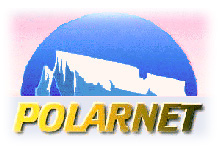 On December 6th, 2006, the CNR, with the
On December 6th, 2006, the CNR, with the 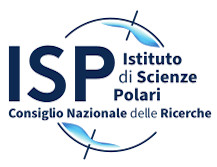 Italian researchers involved in research in polar areas and other remote areas of the planet are involved in highly interdisciplinary research in life sciences, Earth and climate sciences, marine sciences, atmospheric and space sciences, in addition to technological innovation. But national research in polar areas has often been very fragmented and scarcely visible in an international context, because, although carried out within highly qualified research groups, they have so far only been individually recognizable and not associated with a national structure.
Italian researchers involved in research in polar areas and other remote areas of the planet are involved in highly interdisciplinary research in life sciences, Earth and climate sciences, marine sciences, atmospheric and space sciences, in addition to technological innovation. But national research in polar areas has often been very fragmented and scarcely visible in an international context, because, although carried out within highly qualified research groups, they have so far only been individually recognizable and not associated with a national structure. 